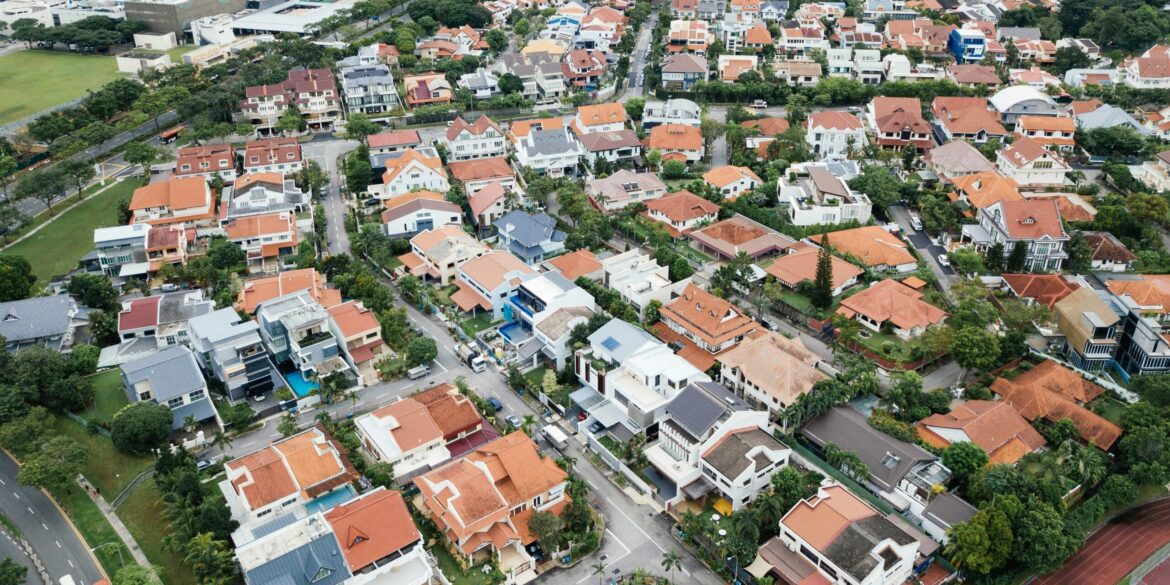Southern California’s housing market in mid‑2025 continues to show moderate price appreciation, tight inventory conditions, and persistent affordability challenges across the region. The average home price across SoCal stands at approximately $866,400, marking a 4.8% increase compared to the same period last year. This rise is largely driven by steady demand and limited supply.
In Los Angeles County, median prices now range between $790,000 and $820,000, a nearly 9% jump year over year. Orange County remains one of the most expensive areas, with home prices hovering close to the $1 million mark. Meanwhile, the Inland Empire, which includes Riverside and San Bernardino counties, continues to attract buyers with more affordable housing. The median home price there is around $600,000, with annual price growth ranging from 7 to 8 percent.
Inventory levels have slightly improved, with active listings up 9.3% from a year ago, equating to about a four-month supply of homes. However, this remains well below the six-month benchmark typically considered a balanced market. In high-demand pockets of Los Angeles and Orange counties, supply is tighter still, with just 2.5 to 3 months of inventory available. Despite these constraints, home sales have remained stable or modestly increased. Southern California accounted for over 55% of the state’s home sales, with a slight 2% increase in transaction volume compared to the previous year.
Read Also: https://socaljournal.com/southern-california-housing-market-shows-signs-of-stabilization-5/
Affordability remains a major issue. Only about 16% of California households—and even fewer in Southern California—can afford a median-priced home. This marks one of the lowest affordability rates on record. Long-time homeowners who secured ultra-low mortgage rates during the pandemic era are reluctant to sell, creating a “lock-in effect” that further limits supply. Additionally, a growing share of younger buyers rely on family assistance to afford down payments. Nearly 25% of Gen Z and millennial homebuyers received financial help from relatives, as the average down payment in California reached around $63,000.
Mortgage rates near 6.8% continue to limit purchasing power. In May 2025, home sales across Southern California dipped by 7.6% compared to a year earlier, even as the median price climbed slightly to $888,000. Economists attribute this slowdown to high borrowing costs and cautious consumer sentiment. However, the increase in inventory is seen as a potential sign of market rebalancing, even if the advantage still lies with sellers.
Statewide projections from the California Association of REALTORS® suggest that the median home price in California will reach about $909,400 by the end of 2025, a 4.6% increase from last year. Existing single-family home sales are expected to rise by 10.5% year over year, driven by a combination of falling interest rates and incremental supply improvements.
Investor ownership has become a growing concern in the state. Roughly 19% of California homes are now owned by investors, totaling around 1.45 million properties. In Los Angeles, Orange, San Diego, and San Francisco counties, investors make up 15 to 16% of homeowners. While most of these investors are small-scale landlords rather than institutional buyers, their collective impact on pricing and availability is significant. In some rural and vacation-heavy counties, investor ownership exceeds 70 to 80%, exacerbating local affordability issues.
Despite California ranking only 36th nationally for investor homeownership share, its housing shortage magnifies the effect investors have on prices and access. The current affordability gap is stark: to qualify for a mortgage on a median-priced home, a household would need an income of approximately $237,000—more than twice the state’s median household income. Even entry-level homes require an income of around $145,000. Since 2020, the cost of mid-tier homes has increased by 82%, while average wages have risen only 23% and rents by 38%.
The reluctance of homeowners to sell, coupled with high prices and mortgage rates, has made it difficult for many first-time buyers to enter the market. Still, some movement is expected as economic conditions shift. Lower interest rates projected for later in 2025 may encourage more listings and ease upward pressure on prices. Experts anticipate a 10% rise in inventory by year’s end, although it will likely remain below historical norms.
Inland areas like the Inland Empire continue to draw buyers priced out of the coastal counties. These regions offer better affordability while still providing access to employment centers, though rising prices there suggest that demand remains strong. Coastal and urban areas continue to command premium prices due to limited supply and high demand, while some rural areas are experiencing unique dynamics driven by tourism and investor activity.
Mid‑2025 marks a period of transition for Southern California’s real estate market. While price growth has moderated and listings have improved slightly, the market remains challenging for buyers, especially those without financial support. Sellers still benefit from constrained supply, but the broader landscape may begin to shift if rate cuts and housing reforms come into play.

